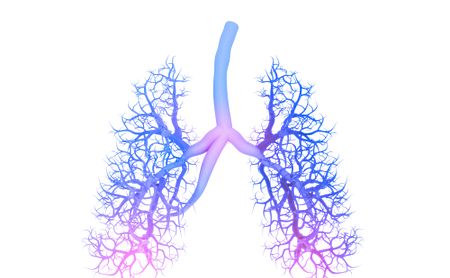‘Blueprint’ of Healthy Lung Cells May Guide Research Into Lung Disease

Scientists have created a new “cellular blueprint” of healthy lung cells that provides a reference against which tissue from lungs affected by conditions like pulmonary hypertension (PH) can be compared.
The ability to accurately map the differences between healthy and diseased lungs can help researchers find new therapeutic approaches, according to the investigators. Having such a blueprint offers a way to explore the genes and cell types associated with these conditions and may guide research into PH and other lung diseases.
“If you want to return to normal, you need to know what normal is,” Naftali Kaminski, MD, the study’s senior author and chief of Yale University’s section of pulmonary, critical care, and sleep medicine, said in a Yale press release.
The study, “Integrated Single Cell Atlas of Endothelial Cells of the Human Lung,” was published in the journal Circulation.
Endothelial cells line the surfaces of the vessels traveling through the lungs, and are involved in the gas exchange that enables blood to carry oxygen and get rid of carbon dioxide. The impairment or improper functioning of endothelial cells can lead to disorders such as PH, chronic obstructive pulmonary disease or COPD, pulmonary fibrosis, and others.
Despite the critical role that endothelial cells play in these disorders, scientists have lacked a detailed reference atlas — a cellular blueprint, essentially — of what normal, healthy endothelial cells look like.
Now Kaminski, along with colleagues at Yale and other universities in the U.S. and Europe, set out to create such an atlas using more than 15,000 endothelial cells taken from 73 healthy individuals. They used techniques that allowed them to assess the activity of thousands of genes within each endothelial cell.
The team identified distinct sets of gene activity for cells of blood vessels and lymph vessels, and also of subsets of tissue related to these two groups.
For example, cells lining capillaries, which are tiny blood vessels, expressed more genes related to gas exchange, while endothelial cells lining the thin-walled veins expressed genes that enabled white blood cells — components of the immune system — to pass through the walls and access other tissues.
The researchers also found two cell types that had not been previously distinguished as separate populations.
One of these groups, designated “aerocytes,” was found in the lung parenchyma, which is the tissue involved in gas transfer. The second, called “general capillary endothelial cells,” were found in the airways and the visceral pleura, which are the membranes lining the outside of the lung.
“It is like the Hubble telescope of biology,” said Jonas Schupp, MD, the study’s lead author and a postdoctoral fellow in Kaminski’s lab. “We were able to identify cell types that were indistinguishable before, as well as augment the understanding of discoveries made by others.”
In addition to identifying different cell types, the team studied how endothelial cells help maintain homeostasis — a state of biological balance — within the lungs. This was done by analyzing how the various endothelial populations communicate with each other.
The investigators have made their complete findings available for other researchers to use as a public online mining tool. That means the data are readily available for public download.
“We hope that the availability of our data will accelerate the development of endothelial cell specific therapies in lung disease,” Kaminski said.
As an example of how their cellular blueprint might shed light on lung disease, the team compared commercially obtained endothelial cells to those taken from individuals with pulmonary arterial hypertension, and then looked at the findings relative to those of the cell atlas.
While they observed all vascular endothelial cell populations present in patient-derived cells, the commercial cells appeared to have lost their native lung characteristics.
Mice are a very common animal used in basic and pre-clinical research, including in investigations into PH. Given that, the scientists also examined the lungs of mice to see which facets of lung endothelial cell biology were preserved between the two species. All cell types, including the two newly discovered ones, were present in both human and mouse cells, along with many of the same marker genes used to identify them.
“The comparison of human and mouse [endothelial cell] diversity and marker gene expression revealed considerable overlap. All human [endothelial cell] subpopulations could be identified in mice as well,” the researchers wrote.
Overall, this “integrated analysis provides the comprehensive and well-crafted reference atlas of lung endothelial cells in the normal lung and confirms and describes in detail previously unrecognized endothelial populations across a large number of humans and mice,” the team concluded.
The researchers also noted that this type of work is “crucial to understanding the molecular function of the lung, and its dysfunction in disease.”







